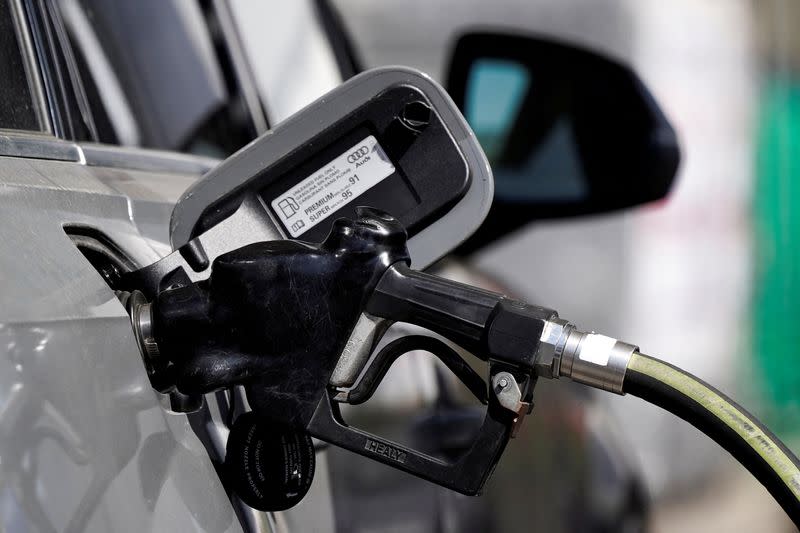US gasoline slumps to near 3-year low on end of driving season, oil slump

By Shariq Khan
NEW YORK (Reuters) - U.S. gasoline futures fell nearly 6% on Tuesday to their lowest since December 2021, as the end of the driving season weighed on demand for the motor fuel amid a sell-off in the broader oil market.
Gasoline futures for October deliveries settled 5.5% lower at $1.98 per gallon, their biggest losses in a single session since July 2022.
The motor fuel was the biggest decliner amid a broader energy market sell-off on Tuesday, as the end of the summer driving season in the country and ample inventories put additional pressure on gasoline, Rabobank strategist Joe DeLaura said.
The Labor Day holiday, celebrated on the first Monday of September, is considered the end of the summer driving season in the United States.
Meanwhile, U.S. crude oil futures fell 4.4% to $70.34 a barrel on Tuesday, their lowest settlement since December 2023.
Resolution of disputes that led to lower Libyan oil output and exports has eased supply constraints, while weak manufacturing data from China reignited concerns of poor demand in the top oil-importing nation. [O/R]
The sharp decline in oil prices could push retail gasoline to its lowest since 2021 by the end of October, Gasbuddy analyst Patrick De Haan posted on social media.
The cost of crude oil is the biggest component of the cost of gasoline at the pumps, according to the U.S. Energy Information Administration.
At the U.S. Gulf Coast refining hub, gasoline was trading close to under $2 a barrel and technical factors are suggesting more downside ahead, fuel distributor TACenergy said in a note.
"The driving season has ended as energy markets start September trading with a big selloff in gasoline prices," they said.
Gasoline futures for the most immediate delivery were at their lowest premium to the next contract since June. Higher future prices are a signal for traders to store more product instead of selling at low prices.
U.S. gasoline stockpiles stood at 218.4 million barrels by Aug. 23, 0.5% higher than last year.
(Reporting by Shariq Khan in New York; editing by Jonathan Oatis)